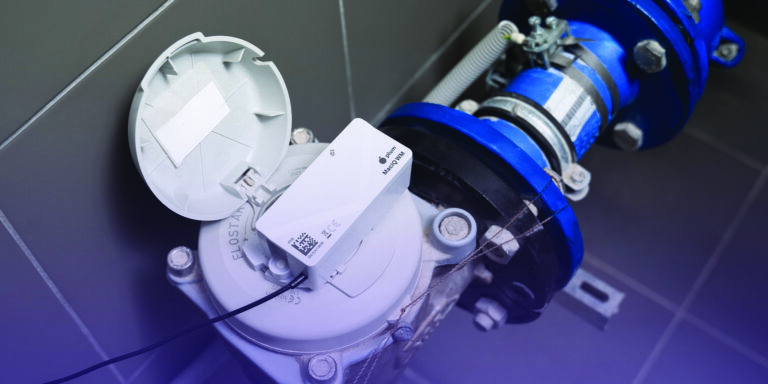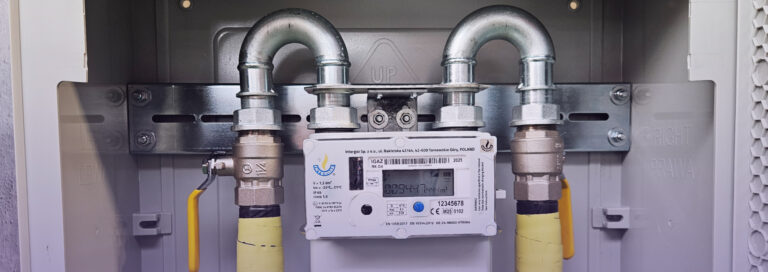New challenges for the water industry!
Cybersecurity in the water and wastewater sector is no longer optional – it has become a necessity. Cyber and radio disruptions pose a real threat to the operational continuity of utilities, and consequently, to their financial stability and reputation.

Sabotage, disruptions – is your company ready for the challenge?
In the latest special report from the Polish Internal Security Agency (Threats of Terrorism and Sabotage to Critical Infrastructure in 2025), dedicated to the protection of critical infrastructure, it is clearly stated that sabotage, hybrid, and cyber threats are becoming a real and rapidly growing challenge – including for the water and waste water sector. Today this is not a hypothetical risk. It’s a tangible threat that can impact not only operational continuity, but also a company’s financial liquidity and reputation.
In times of escalating geopolitical tensions and increasingly sophisticated attacks on critical infrastructure, even something as seemingly minor as the choice of meter-reading technology can determine not only the efficiency of the entire system, but also financial stability and public trust. What once was perceived as a technical decision became a strategic one.
Seemingly stable system might be your weakest point
If your water utility relies on legacy radio-based meter reading systems (such as walk-by radio, LoRa, or other unlicensed-band technologies), it may already be operating in an environment vulnerable to disruptions, tampering, and intentional sabotage. Unlicensed frequency bands, which most radio solutions use, are unsafe and accessible to virtually anyone, even amateur electronics enthusiasts. With just a simple transmitting device, it’s possible to block meter readings, interfere with data transmissions or even deliberately manipulate results.
Sabotage? Exaggeration?
Let’s look at Europe – the threat is real
In 2023 multiple incidents involving radio transmission interference were reported in Poland and neighbouring countries. The most publicized example was a series of “radio-stop” signals transmitted near railway lines, stopping trains and paralyzing rail traffic. Other cases involved cyberattacks in the energy sector aiming to destabilize power grids, as well as radio disruptions in municipal networks, resulting in lost billing data. In many instances, the attacks were attributed to deliberate sabotage by foreign state actors.
These incidents are no longer isolated – they’re part of a new threat landscape that also includes the water and sewage sector. Water infrastructure – although less visible – is just as critical. Systems that rely on unlicensed frequencies are more susceptible to interference, eavesdropping, and manipulation. In some regions of Poland, unstable radio systems have already led to missing readings and severe billing errors – a fast track to financial chaos and customer dissatisfaction. A radio attack doesn’t need to be complex – it can be cheap, fast and alarmingly effective.

Silence in the system could cost millions
Even minor disruption, intentional or accidental, can result in system shutdown. Literally. No data transmission means no readings. No readings mean no invoices. And no invoices? A real loss of revenue and a threat to the company’s financial liquidity.
In practice this means:
- inability to bill thousands of customers,
- a surge in complaints and social unrest,
- emergency return to manual readings,
- significant financial risk across the entire company.
This highlights a crucial point: meter reading systems has to be not only functional but also resistant to interference and independent of infrastructure that lacks control. In an era where critical infrastructure is a frequent target of cyber and radio attacks, technological security is no longer optional – it is essential to survival and proper operation, both for companies and end users.
Can someone manipulate your meter reading system?
Yes. Even from the basement next door
Older-generation systems using local communication or other directly accessible interfaces – are easy targets for anyone with basic electronics knowledge. A technically skilled person with malicious intent could intercept transmissions, disrupt readings, simulate fake consumption values, or simply introduce noise into the billing system. The result? Inflated bills, zero readings, chaos. In the best case – customer complaints. In the worst – public panic, lost trust and severe financial damage.

Technology and cybersecurity
as a response to growing challenges
One emerging solution in this difficult environment is the use of stationary NB-IoT technologies operating in a closed transmission environment – for example, via a private APN and in cooperation with a trusted network operator. These solutions reduce the risks associated with unlicensed-band transmissions and offer better data control and flow security.
As a manufacturer of electronics and IoT devices, we consider the following aspects critical for cybersecurity and regulatory compliance:
- use of licensed frequency bands to significantly reduce the risk of external interference,
- no local communication interfaces – minimizing unauthorized access risks,
- end-to-end data encryption,
- real-time data availability, regardless of external conditions,
- 24/7 infrastructure monitoring and technical support for rapid crisis response.
This approach not only addresses current threats but also aligns with long-term risk management strategies in the water and sewage sector.
Digital security in water utilities
the foundation for the future
The ISA (Internal Security Agency) report clearly discusses threats to critical infrastructure, including water and sewage systems, and highlights that local water utilities may become targets of cyberattacks due to poor security. It emphasizes that many systems still rely on pre–internet-era technologies, making them vulnerable to hybrid threats – including sabotage and hacking. Sabotage may target data transmission and IT systems to cause financial, operational or reputational paralysis of critical service providers.
Let’s imagine a few scenarios that could happen in virtually any water utility:

reading disruptions = billing chaos
Short-term: complaints skyrocket, no data for invoicing, risk of revenue loss. Long-term: loss of trust from customers and municipalities, return to manual readings, costly service interventions.

signal manipulation = artificially low or high bills
Social destabilization scenario: sudden bill spikes trigger unrest - a potential weapon for an aggressor. Financial sabotage scenario: artificially low readings lead to insufficient revenues, halting investments or payrolls.

loss of system control = helplessness in the face of incidents
Lack of control over the system means a limited ability to respond quickly to incidents, which can delay both problem identification and resolution. In environments such as water supply systems, this can lead to temporary disruptions in operations.
Given today’s threats to critical infrastructure (including water systems), neglecting cybersecurity investments means exposing your utility to multidimensional risks: billing chaos, sabotage attacks, legal consequences, and reputational damage. Digital security is no longer optional – it’s a necessity for every water utility. In an era of growing technological and geopolitical threats, failure to invest in secure, reliable meter reading systems exposes water utilities to real financial, operational, and reputational losses. This is not just a technological matter – it’s about ensuring continuity of water supply and maintaining public trust. Unsecured infrastructure is an easy target – and the future of your company is at stake.
Don’t wait until your utility becomes the next cyberattack victim – discover our smart technological solutions today!
PLUM is here to help
Our company offers long provided innovative devices for the water and sewage sector. Designing them, we focus not only on technical requirements but also on security. Our telemetry module – MacIQ WM – use only licensed frequency bands of network operators utilizing Narrowband IoT technology, which ensures coverage even in the most challenging locations where other radio systems often fail. Most importantly, they include configurable alarms for detecting magnetic and electromagnetic interference as well as device tampering. With our solutions your network stays secure!









